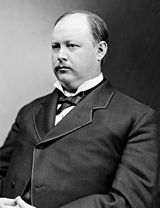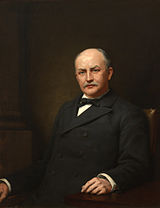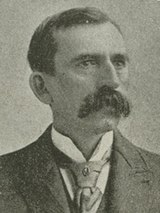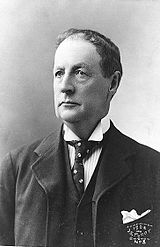United States House of Representatives elections, 1894
|
|
|||||||||||||||||||||||||||||||||||||||||||||||||||||
|---|---|---|---|---|---|---|---|---|---|---|---|---|---|---|---|---|---|---|---|---|---|---|---|---|---|---|---|---|---|---|---|---|---|---|---|---|---|---|---|---|---|---|---|---|---|---|---|---|---|---|---|---|---|
|
|||||||||||||||||||||||||||||||||||||||||||||||||||||
|
All 357 seats in the U.S. House of Representatives 179 seats needed for a majority |
|||||||||||||||||||||||||||||||||||||||||||||||||||||
|
|||||||||||||||||||||||||||||||||||||||||||||||||||||
|
|||||||||||||||||||||||||||||||||||||||||||||||||||||
Elections to the United States House of Representatives in 1894 comprised a significant realigning election — a major Republican landslide that set the stage for the decisive election of 1896. The elections of members of the United States House of Representatives in 1894 came in the middle of President Grover Cleveland's second term. The nation was in its deepest economic depression ever following the Panic of 1893, so economic issues were at the forefront. In the spring, a major coal strike damaged the economy of the Midwest and Mid-Atlantic. It was accompanied by violence; the miners lost and many moved toward the Populist party. Immediately after the coal strike concluded, Eugene V. Debs led a nationwide railroad strike, called the Pullman Strike. It shut down the nation's transportation system west of Detroit for weeks, until President Cleveland's use of federal troops ended the strike. Debs went to prison (for disobeying a court order). Illinois's Governor John Peter Altgeld, a Democrat, broke bitterly with Cleveland.
The fragmented and disoriented Democratic Party was crushed everywhere outside the South, losing more than half its seats to the Republican Party. Even in the South, the Democrats lost seats to Republican-Populist electoral fusion in Alabama, Texas, Tennessee, and North Carolina. The Democrats ultimately lost 127 seats in the election while the Republicans gained 130 seats (after the resolution of several contested elections). This is the largest swing in the history of the House of Representatives, and also makes the 1894 election the single largest midterm election victory in the entire history of the United States. (A political party would not suffer triple-digit losses again until 1932.)
...
Wikipedia




